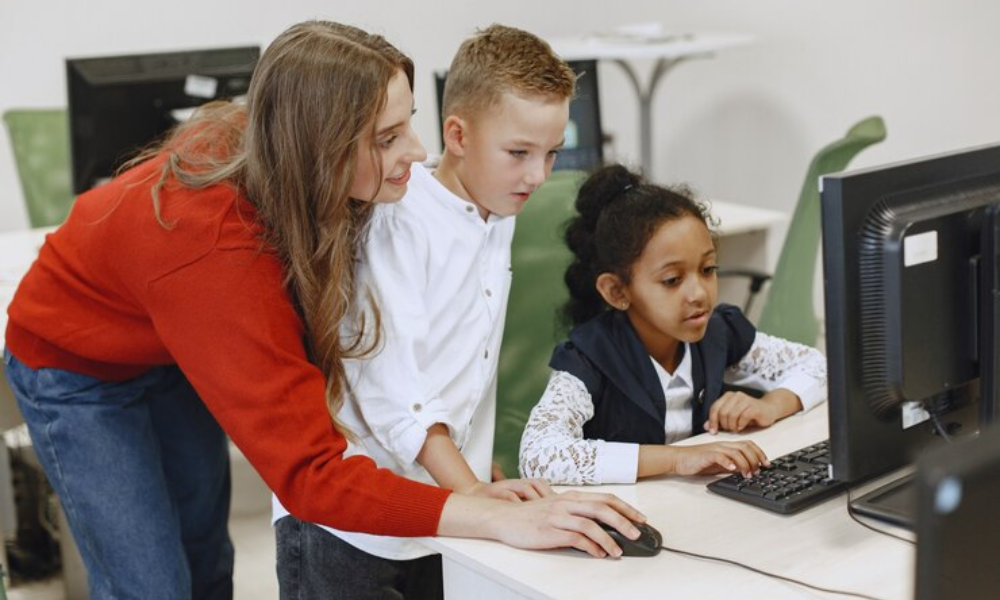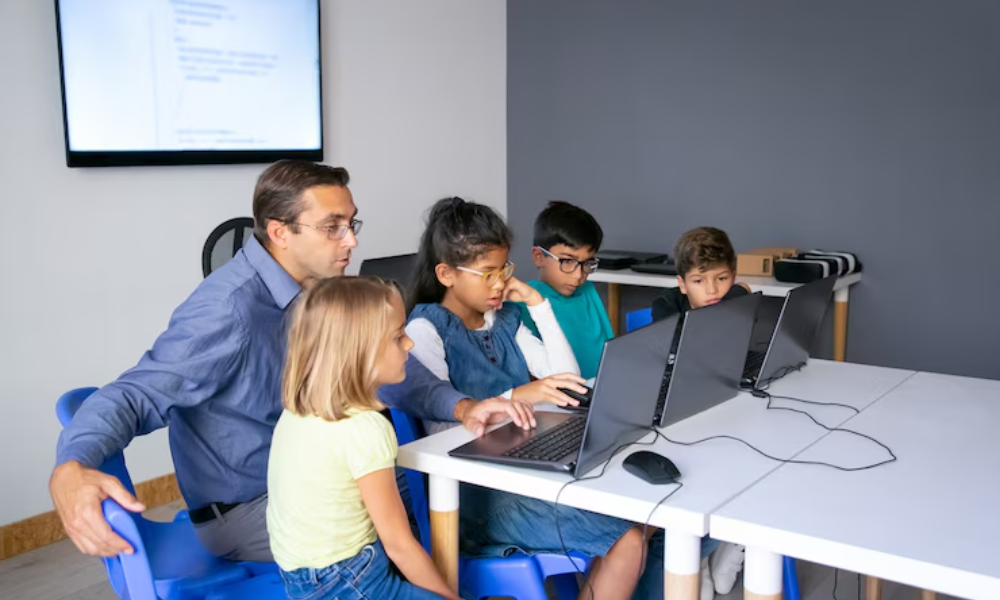In the ever-evolving landscape of education, technology has become a pivotal tool, especially in light of recent global challenges. Girls’ boarding schools in Dehradun have been at the forefront of this transformation, seamlessly integrating technology in Education to ensure uninterrupted learning. The importance of technology in education cannot be overstated, as it equips students with critical skills, fosters engagement, and makes learning more accessible.
Why Technology is Important in Education

Technology in Education has redefined education, shifting traditional methods into dynamic, interactive experiences. The key reasons why technology holds such importance in education include:
- Access to a Vast Pool of Information: Students can access up-to-date information and resources with just a click, allowing for in-depth research.
- Interactive Learning: Tools like virtual labs, educational apps, and multimedia enhance learning by making it more engaging.
- Skill Development: From coding to digital literacy, students acquire skills that are essential for future success in the digital world.
- Increased Collaboration: Technology fosters greater collaboration between students, teachers, and even experts from across the globe through platforms like Zoom, Google Classroom, and Microsoft Teams.
Technology Adoption in Girls’ Boarding Schools in Dehradun

Dehradun, known for its prestigious boarding schools, has been quick to adopt technology to maintain educational excellence. Here are the way technology in Education is integrated into girls’ boarding schools:
- Virtual Classrooms: Most girls’ boarding schools in Dehradun have implemented virtual learning platforms, ensuring students can attend classes from anywhere.
- E-Libraries: Digital libraries are accessible 24/7, allowing students to research and access academic resources at any time.
- AI-Based Learning Systems: These schools have begun using Artificial Intelligence (AI) to provide personalized learning experiences tailored to the needs of individual students.
- Cloud-Based Solutions: Cloud storage and collaboration tools like Google Drive help students and teachers store, share, and collaborate on projects effortlessly.
Remote Learning: How It Works in Girls’ Boarding Schools in Dehradun

1. Virtual Learning Platforms
Remote learning in Dehradun’s girls’ boarding schools revolves around using robust virtual platforms that replicate a physical classroom experience. Here’s how they function:
- Live Classes: Teachers conduct live lessons where students can participate, ask questions, and engage in real-time discussions.
- Asynchronous Learning: Recorded lessons are available for students who need flexibility due to time zone differences or personal schedules.
- Assignments and Feedback: Online platforms allow teachers to assign homework, grade assignments, and provide feedback quickly.
2. Digital Assessment and Feedback
Remote learning is not just about delivering lessons. It’s also about assessing and improving student performance. Schools in Dehradun have implemented digital tools for assessments:
- Online Exams: Students take exams through secure online platforms that allow for real-time monitoring.
- Performance Analytics: AI-powered tools track a student’s performance, providing feedback and helping teachers adjust the curriculum according to each student’s needs.
Benefits of Technology in Remote Learning for Girls’ Schools

The benefits of Technology in Education in the context of remote learning go beyond convenience. Here are some key advantages for girls’ schools in Dehradun:
1. Flexibility and Accessibility
Students in remote areas or those facing physical challenges can now access quality education without the need for relocation. This ensures that no student is left behind due to geographical constraints.
- Learning at One’s Own Pace: Students can go through recorded lectures, revisit challenging topics, and learn at their own pace.
- Access to Global Resources: The internet opens doors to global educational content, from expert lectures to interactive learning platforms.
2. Encouragement of Self-Discipline and Time Management
Remote learning demands students manage their time effectively, encouraging self-discipline—an essential skill for life. The need to independently complete assignments, follow study schedules, and stay motivated builds resilience and responsibility in students.
3. Enhanced Parent Involvement
Technology in Education also brings parents closer to their child’s academic life. Through online portals and regular updates, parents can track their child’s progress, review assignments, and maintain communication with teachers.
4. Tailored Learning Experiences
AI-based learning tools and apps provide personalized learning experiences by adapting to each student’s strengths and weaknesses. This ensures that all students receive the attention they need, even in a virtual environment.
Challenges and Solutions in Implementing Technology in Education

While the advantages of technology in education are clear, schools face several challenges in its implementation. Here’s a breakdown of some common challenges and their solutions:
| Challenge | Solution |
| Digital Divide | Schools provide devices and internet access to students in need. |
| Teacher Training | Regular training programs for teachers on using digital tools effectively. |
| Maintaining Student Engagement | Interactive apps and gamification keep students engaged in virtual classrooms. |
| Cybersecurity | Schools use secure platforms and educate students on safe internet practices. |
How Schools Are Preparing for a Digital Future

Girls’ boarding schools in Dehradun are not only adapting to current technological demands but are also preparing for the future of education. Key initiatives include:
1. Hybrid Learning Models
A hybrid learning model, which blends traditional in-class education with digital learning, is being explored. This model offers flexibility, allowing students to switch between physical and virtual classrooms as needed.
2. Incorporating VR and AR
Schools are starting to explore Virtual Reality (VR) and Augmented Reality (AR) tools to create immersive learning environments. These technologies can simulate historical events, take students on virtual field trips, and create engaging interactive lessons.
3. Coding and STEM Education
STEM (Science, Technology, Engineering, and Mathematics) education is becoming a priority. Coding classes, robotics clubs, and AI projects are being integrated into the curriculum to equip students with future-ready skills.
The Role of Teachers in the Tech-Driven Classroom

Teachers play a crucial role in integrating technology into classrooms. While technology provides tools, it is the teachers who shape the educational experience. Here’s how:
- Facilitators, Not Just Instructors: In a tech-driven environment, teachers guide students in navigating digital tools, fostering critical thinking, and encouraging creativity.
- Continuous Learning: Teachers in Dehradun’s girls’ boarding schools undergo continuous training to stay updated on the latest technological advancements, ensuring that they can offer the best education possible.
Conclusion: The Future of Technology in Education
As we move forward, it’s clear that technology will continue to play a vital role in education. Girls’ boarding schools in Dehradun have set a benchmark by adopting advanced tools and strategies, ensuring their students are equipped for the future. The integration of technology not only enhances learning but also prepares students for the challenges and opportunities in the digital age. By leveraging digital tools, these institutions have created a learning environment that is not limited by location, ensuring that education remains accessible, interactive, and impactful.
